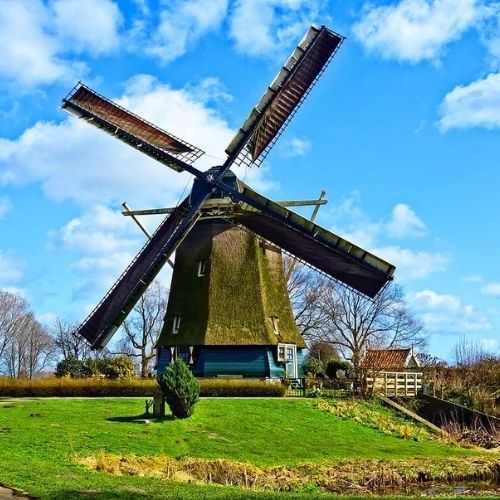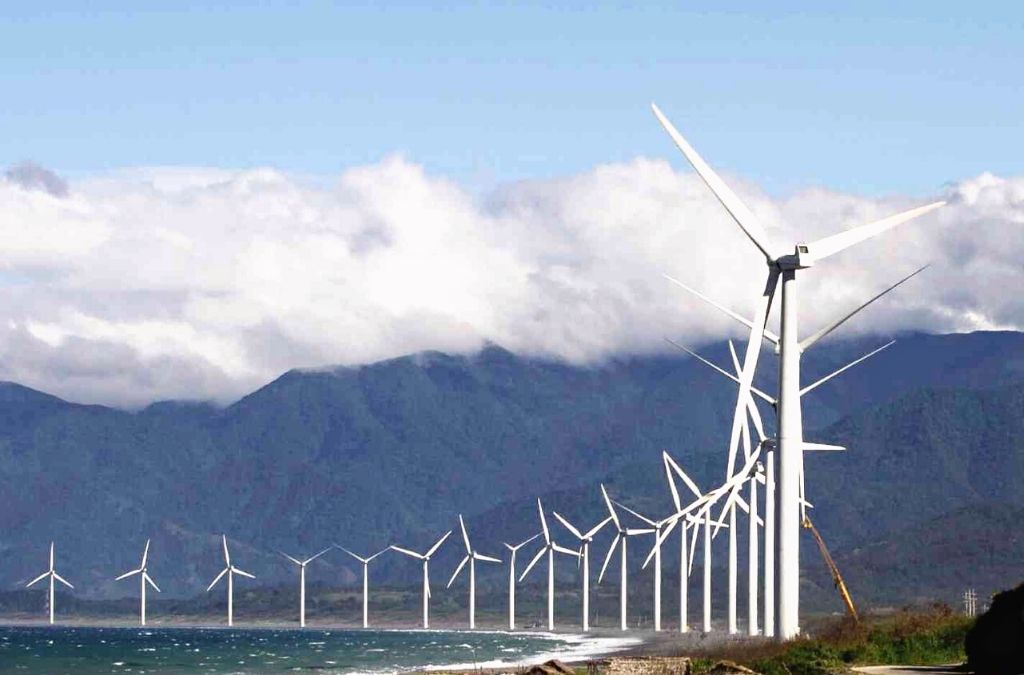Have you ever used a fan in your home when the weather becomes hot? The fan in your house has blades that spin at high speed to produce wind that cools you. Windmill generators have a similar structure as a fan, though it is more extensive and operates differently.
Wind power is a versatile source of energy. But, are wind turbines the same as windmills? Although people use the two terms interchangeably, there is a considerable difference between them.
Wind turbines convert kinetic wind energy into electric energy, where windmill generators are primarily useful in converting the kinetic energy from the wind into mechanical energy. This mechanical energy is then used for various purposes. These include grinding grain, sawing wood, pumping water, and milling crops.
Jump ahead to:
History Of Windmill Generators
Windmills have been in existence for centuries (more than 3000 years).
They were mainly used for mechanical purposes such as grinding grain, sawing wood, and pumping water.
However, since the twentieth century, some windmill generators have also been used for generating electricity.
The development of modern wind turbines began in the 1970s. Between 1994 to 2000, the amount of wind power systems in use rose by 25-30% per year.
As such, wind power qualifies as the fastest-growing source of energy.
By the year 2000, the global usage of wind power was 38,000 GWh, and the total capacity of wind power installed was 17,500MW.
The enhanced use of wind power can be attributed to the development of new technology, and the number of wind power plants has increased.

Additionally, the cost of production per KWh has gone down, and there is the implementation of new electric systems.
How Do Windmill Generators Work?
One of the most noticeable differences between windmill generators and wind turbines is their size and shape. A windmill generator is bigger and broader and comes with thicker blades. On the other hand, a wind turbine is thinner and taller and comes with skinnier blades.
The difference in size can be attributed to the difference in materials that go into making the two. For instance, a wind turbine only requires two or three large blades, which should be elevated above the ground. The blades connect to a rotor which connects to the main shaft. When the wind blows, the blades rotate and the process helps generate electric energy ready for use.
A windmill generator uses the same process to generate energy. However, this happens on a larger scale.
Parts
First, a controller will power the windmill generator. The blades will start rotating when the built-in anemometer reads the speed of the wind to range between 8 to 16 miles per hour (mph).
Additionally, the controller will power down the windmill generator if the wind speeds go beyond 55 miles per hour. Wind speeds beyond 55mph can cause damage to the blades and shaft of a windmill generator.
The windmill generator also features a yaw drive. Using a wind vane, a yaw drive will orient the windmill generator into the wind, if it changes direction, to maximize its effectiveness.
Next, the spinning blades of the windmill generator turn the rotor. The spinning blades together with a hub form a rotor. When necessary, a pitch system will turn the spinning blades and prevent the rotor from spinning them, especially when the winds are too high or too low to generate power.
Sometimes you may need to stop the rotor manually, especially if there is an emergency. As such, the windmill generator comes with a hydraulic, electric, or mechanical brake to help do this.
The windmill generator also features a gearbox that increases rotational speed. The gearbox is connected to the rotor with both a low-speed shaft and a high-speed shaft. This helps to increase the rotational speed of the blades from 30 to 60 rotations per minute to as high as 1,800 rotations per minute. The gearbox is likely the most expensive part of the windmill generator, and it is also the heaviest.
Function
Finally, your windmill generator produces mechanical or electrical energy. The low-speed shaft is used for mechanical energy. Due to the high rotational speed generated by the high-speed shaft, your windmill generator can produce electric power.
Engineers are exploring the possibilities of using direct drive generators that can help to generate energy at lower rotational speeds. This may help get rid of the heavy and expensive gearbox.
Types of Windmill Generators
Windmill generators come in four different types that include:
- Post
- Tower
- Smock
- Fan
Post Windmill
The post windmill is the earliest type of European windmill. The whole structure pivots on a post to bring the blades into the wind. Its most outstanding feature is that it’s the windmill’s body, consisting of all the machinery that rotates on the vertical post.
Smock Windmill
The smock windmill is a tapered tower traditionally clad in weatherboard, shingles or thatch. This windmill generator will have 6-12 sides and features a roof that rotates to put the sails into the direction of the wind.
It is named because of the resemblance to farmers smocks that were traditionally worn.
Tower Mill
A tower windmill refers to a type of vertical windmill generator. It features a stone or brick tower on which a wooden roof or cap sits. The body of the windmill doesn’t rotate. Only a cap rotates to enable the sails to face the direction of the wind.
Because they have a solid and sturdy base, they are able to be much higher and thus use much larger sails/blades. This gave them greater reach so they could capture lighter winds and produce more power.
Fan Mill/Waterpump
Fan mills are not windmills, although they often get called that. Windpump is a much more appropriate term as they are used to extract water deep beneath the earth’s surface.
They feature four to twenty spinning blades situated close together to give high torque with low wind. The tail turns the sails into the wind and the gearbox runs the pump to extract the water.

Various Uses Of Windmill Generators
Windmill generators are used for various purposes.
- Windmills come in handy in converting wind energy into electrical or mechanical energy
- They have been used to extract oil from seeds
- Processing of various commodities including cocoa, tobacco, spices, paints, dyes, and stock-watering
- Milling grains
- Grinding grains and pumping of groundwater
Final Thoughts
Wind energy has been used for centuries and is becoming increasingly popular due to its minimal environmental impact. Modern windmill generators are used to convert wind energy into mechanical energy and even electrical energy.
They are still used for pumping water, grinding grains and processing certain foods. However, it is the windmill generator’s ability to convert wind energy to electricity that we are interested in. Harnessing the wind to spin the blades around a rotor allows these machines to produce usable energy from Mother Nature.
Hope this article has provided you knowledge about windmill generators. Therefore, you would be also interested in wind turbines which you can read in our recent articles; Best Home Wind Turbines Will Save You Money In 2021 and Best Home Wind Turbines 2020.

